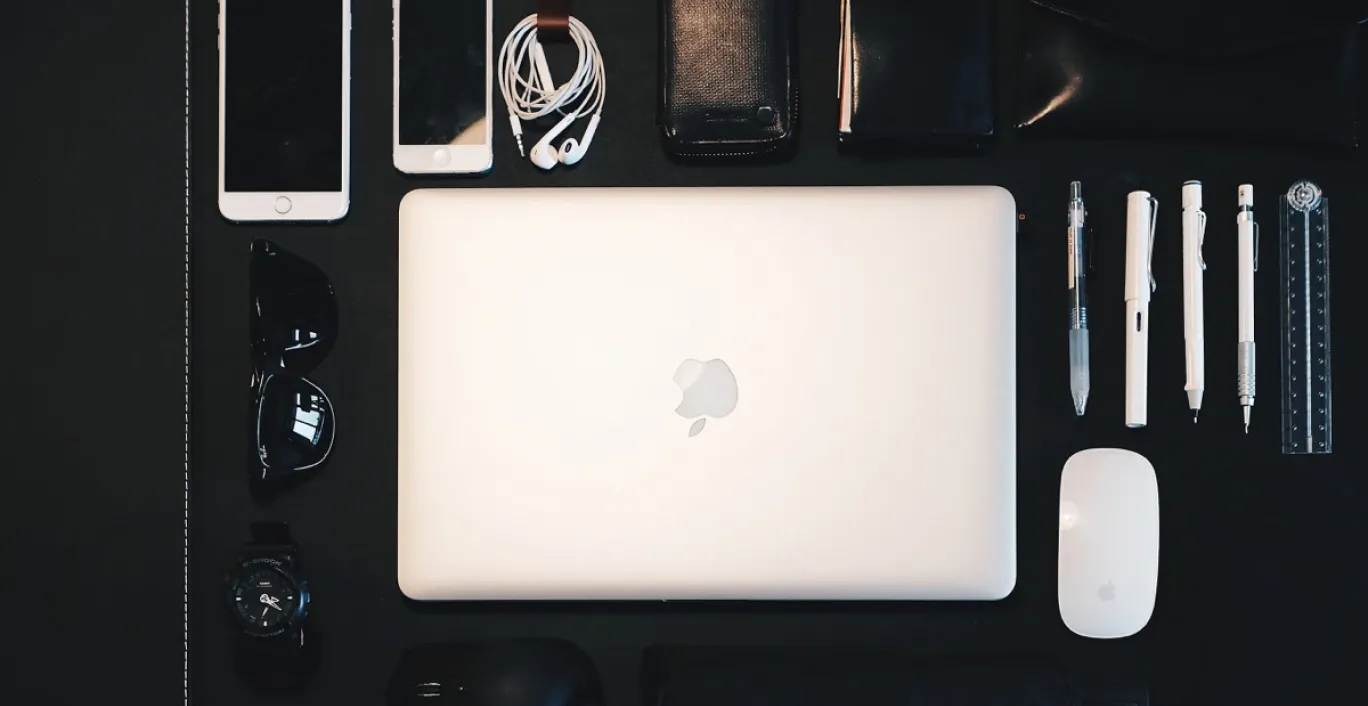A good start is half the battle. That also applies when you are going to do a user survey on site. It is then often the details that you overlook or forget. This can impact your research results and cause a lot of (unnecessary) stress. But what does 'on-site user research' actually mean? And what is practical to prepare for? With the checklist below, you will always be well prepared for an on-site user survey.
On-site user research
In some cases, it may be desirable to conduct user research on site. For example, at the end user's home or at the client's location.
Want to conduct well-prepared user research on site? Then prepare with the tips below.
You do this (a few days) before the user survey takes place
What devices will you take with you?
First of all, it is important to start thinking about what devices you need. This is nothing more than going over for yourself which devices you are going to conduct the user research on. Think about:
Laptop (assuming you are not going to bring a desktop PC)
Tablet
Smartphone
Ideally, respondents would use their own devices. However, this is not always possible or desirable, as respondents often consider own equipment to be 'private'. As a result, they may find it uncomfortable to work with their own devices. Therefore, always provide an (extra) laptop, tablet and/or smartphone.
Check the installed software
Before the examination, make sure you check that the right software is installed on the devices. In case you still need software (e.g. by buying a newer device), you can still purchase it in time. Actually launch the software to see if it works properly. This will rule out unwanted surprises, such as:
Software that no longer works, because it has become incompatible due to an update in your device's operating system.
A verification error that occurs in activation.
A licence that has expired.
Get supplies ready on each device
Check that the necessary programmes and/or software are ready for a full user survey. Are you missing something? If so, you can switch on this at a preliminary stage.
When getting all the supplies ready, think for example:
A shortcut to the material to be investigated.
Installing the application.
Setting up a demo environment.
Check device settings
Ensure that settings that may cause unnecessary or unwanted distractions and interruption are disabled or adjusted. Consider settings such as:
On desktop & laptop:
Automatic sleep mode/hibernation mode
Preferably disable itMouse speed
Return it to default settings, if customised, preferablyNoise level
Set it to a regular volume, preferablyInteractive corners (macOS)
Preferably disable it, if enabled
Op tablet & smartphone:
Autocorrect
Please disable itAutomatic screen lock
Please disable it.
Here, also take into account programmes running in the background. Consider here:
Notifications from virus scanner
Notifications from synchronising programmes
Updates from software
Notifications
Etc.
Pay particular attention to the above when you start using devices that you yourself work on (almost) daily. Chances are that you have set these devices to your own preferences. For you, this works comfortably, but for respondents, these custom settings can (potentially) create distractions and/or an uncomfortable feeling. As a result, the focus shifts from the product to the device. Make sure you adjust these settings, e.g. to the default settings, to avoid displacement of focus.
Do a pilot
It is wise to do a trial session. Therefore, always do a 'pilot', dry-run, general or field test. A pilot is designed to identify any errors or bottlenecks in the research plan or process so that they can be resolved in time.
Consider a back-up plan
Something can always go wrong during an investigation. After all, you cannot prepare for everything. However, try to prepare for the biggest risk factors and/or the most common problems. Consider, for example, the loss of an internet connection. Make sure research material runs (also) locally or make sure you have a mobile hotspot as a backup connection.
Sensible to take with you
When you have everything ready and ready to start conducting the user research, it is wise to take the following with you:
The charger for each device
Plug/extension cord
The scenarios/tasks printed out on paper
Consent statement (to ensure privacy)
Are you taking a laptop with you? If so, make sure you include the following:
A loose mouse
An internet cable
A fixed connection is always more stable than a WiFi connection.
And lastly:
Make sure the devices you bring are charged.
On the day of the user survey
Starting the required programmes
Launch the necessary programmes. For example:
The screen and voice recorder
Mirroring software
Streaming for viewing
The internet browser
The website
The application
Empty cache and clear history
Empty the (browser) cache and (browser) history before you start the user survey and after each session. This way, every respondent starts with a clean slate. Otherwise, actions such as entered fields, items in the shopping basket or settings (filters, preferences, favourites, etc.) may be saved.
Of course, when using the browser, you can also work in private mode (aka; incognito).
After (the day of) the user survey
Reset everything to original or desirable settings
Afterwards, reset everything to original or desirable configuration. Consider:
Delete shortcut(s) and/or application
Delete cache and history
Delete any local files
Restore modified settings
Etc.
Do a brief reflection
Do a short reflection afterwards. Make your own checklist and note down after each user survey what could be improved next time. You do this after each user survey, until you feel your checklist is as complete and perfect as possible.
Need help conducting a user survey? We'd love to help!
Meld je aan voor onze nieuwsbrief en ontvang maandelijks praktische inzichten, tips en tricks om je op weg te helpen naar online groei!
Vul hieronder jouw e-mail in en ontvang direct een handig weetje 🙂
